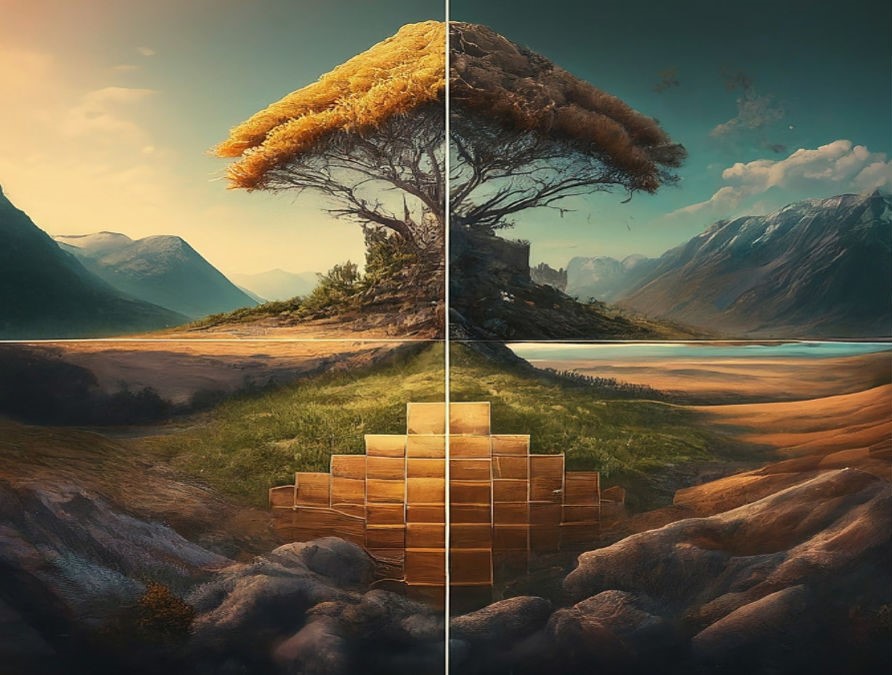Exploring the Creative Canvas of Generative AI’s Unleashing Creativity
Generative AI is the specialized field of Artificial Intelligence that generates new and original content from text to stunning visuals even computer-generated music melodies. This digital vizard is an innovative side of AI that performs simple analytical tasks to engage in creative processes. Gen AI generates human-like content when the user inputs a suitable prompt.
Gen AI evokes various forms encompassing diverse applications and functionalities that include:
Text Generation: In the context of language translation, the transformer model represents a paradigm shift in overcoming the existing limitations of traditional Recurrent Neural Networks (RNNs) and Convolutional Neural Networks (CNNs).
The text generation uses the Gen AI models for the human-like text for writing emails, poems, cod snippets, musical pieces, letters and so on. It can even generate creative text formats that add different writing styles, tones, and voices. In addition, the models can perform text translation, create chatbots, creating concise summaries for a large amount of information.
Familiar Models like
- OpenAI’s GPT (Generative Pre-trained Transformer),
- Google’s BERT (Bidirectional Encoder Representations from Transformers) and T5 (Text-to-Text Transfer Transformer),
- CTRL (Conditional Transformer Language Model) was introduced by Salesforce,
- Turing-NLG developed by NVIDIA and other models
are proficient in generating coherent and contextually relevant text based on given prompts, and pre-training natural language understanding tasks.
Image Synthesis: Generative Adversarial Networks (GANs) are widely used for generating realistic images. They consist of a generator that creates images and a discriminator that distinguishes between real and generated images.
Here are some notable image models along with the organizations or entities that developed them:
- VGG16 (Visual Geometry Group 16-layer) developed by Visual Geometry Group at the University of Oxford
- ResNet (Residual Networks) developed by Microsoft Research
- Inception (GoogLeNet), MobileNet, EfficientNet, Xception, and NASNet (Neural Architecture Search Network) developed by Google Research, Google Inc.
- DenseNet (Densely Connected Convolutional Networks) developed by Facebook AI Research (FAIR)
- AlexNet developed by Alex Krizhevsky, Ilya Sutskever, and Geoffrey Hinton (University of Toronto)
- SqueezeNet was developed by DeepScale, the University of California, Berkeley, and a lot more.
Music Composition: AI models can compose music by learning patterns and styles from existing compositions. This involves training models on musical data to create original and diverse compositions.
Some notable models in the field of music composition include:
- Magenta Studio by Google’s Magenta Project
- AIVA (Artificial Intelligence Virtual Artist)
- IBM Watson Beat
- Google’s NSynth (Neural Synthesizer)
- OpenAI’s MuseNet
- Sony’s Flow Machines and lot more
Video Generation: AI techniques are employed to generate video content, including deepfake technology that can create realistic videos by manipulating existing visual and auditory elements. It creates videos in realistic and coherent video sequences.
Below are various models and methodologies that are noteworthy in the realm of video generation using generative AI:
- MoCoGAN (Motion Conditioned Generative Adversarial Network) was developed by Anirudh Goyal and others
- Vid2Vid developed by NVIDIA
- DeepDream was developed by Google
- DALL-E (by OpenAI) developed by OpenAI and many others
Code Generation: AI models, such as Codex by OpenAI, can generate code snippets based on natural language descriptions, enhancing programming productivity. They can generate codes for various languages like Python, C, C++, and so on. They can create functions, classes, and scripts for the languages. Code generators can even suggest alternatives that can automate repetitive codes.
Interestingly the following code generators have different code generators with specific functionalities:
- OpenAI Codex (GitHub Copilot) developed by OpenAI. It is designed to develop different code snippets for a given natural language prompt and it is integrated into GitHub Copilot extension.
- Tree-sitter developed by GitHub. It is a parser generator tool used in various language models and tools to parse and generate code snippets.
- DeepCoder was developed by Researchers from Microsoft, the University of Cambridge, and ETH Zurich. It aims to automatically generate solutions to programming problems.
- Sketch2Code developed by Microsoft is an AI model that translates hand-drawn user interface sketches into HTML code. It uses computer vision and natural language processing to understand the intent behind the sketches and generate corresponding code.
Generative AI exhibits various other diverse applications across different domains. Style transfer models, for instance, have the ability to transform photographs into captivating artwork, emulating the distinctive styles of renowned painters. In the realm of natural language processing (NLP), conversational agents and chatbots leverage generative models to generate human-like responses, facilitating meaningful interactions. The gaming industry employs procedural content generation (PCG) to dynamically create diverse in-game content, including landscapes, characters, and quests. Additionally, generative models trained on literary works contribute to poetry and literature creation, capturing the styles and themes of well-known authors. In the pharmaceutical field, generative models play a crucial role in drug discovery by predicting molecular structures with desired properties. These applications showcase the versatility of generative AI in transforming and enhancing various creative and scientific processes.
In conclusion, while Generative AI holds immense potential, it is crucial to acknowledge its limitations, including biased training data and ethical concerns. Achieving true originality, especially in artistic domains, remains challenging. Responsible development practices and ethical considerations are essential to fully harness the potential of Generative AI.
Source

